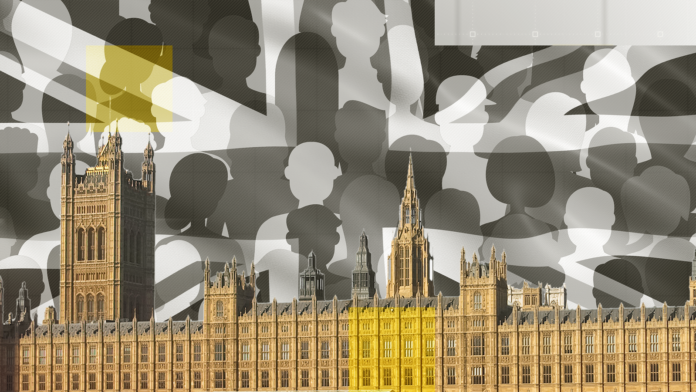More than half of this new parliament is made up of new MPs which makes the House of Commons a better reflection of the nation it serves.
Having more than 50% of MPs entering the Commons for the first time does have benefits but also poses some issues.
“This is significant because, on the one hand, we will have very fresh faces that will be starting their careers, but also will come with new positions on key issues,” said Dr Sofía Collignon, senior lecturer in comparative politics at Queen Mary University of London.
“For a record number of people there will be required training, they will be required to get experience with parliamentary procedures, but also with the spoken and unspoken norms of working in parliament. The unspoken norms are something that you learn by working there, you learn by experience,” added Dr Collignon.
The levels of diversity across different demographics are not a sudden change but the product of a purposeful effort over many years to encourage and promote people of minorities to become parliamentarians.
“One thing that is key is that we are seeing the results of all the Labour Party efforts to recruit women and diverse candidates,” said Dr Collignon.
In his first Commons speech as prime minister, Sir Keir Starmer welcomed the “most diverse parliament by race and gender“, this week.
Women now make up more than two-fifths of the House of Commons and while that isn’t fully representative of the British population, it’s 10 percentage points higher than the level in the 2015 election and immensely higher than 0.7% female MPs 100 years ago.
At 14%, which is 90 MPs in the Commons, the proportion of MPs from ethnically diverse backgrounds much better represents the ethnically diverse population in Britain at 17%.
This is nearly 23 times higher than the four MPs who were elected in 1987, including Dianne Abbott, the first black female MP.
This is also one of the most diverse parliaments in terms of sexuality and gender identity.
Sixty-four MPs openly identify as LGBTQ+. This is the highest level at the start of a parliament but the number has been higher and lower at other points such as when Rishi Sunak called the election when the number was 68.
One of these MPs is the Green Party co-leader Carla Denyer, who describes herself as bisexual or pansexual. She’s also part of a group of at least six Quakers who have been elected at this parliament.
Educational backgrounds are also changing. The number of politicians who have had a private education has been decreasing.
In Sir Keir’s new cabinet, out of 25 cabinet members, just one went to private school and one to grammar school – Louise Haigh and the prime minister himself.
Labour have generally had a lower share of MPs who have been privately educated.
A total of 23 (92%) were state educated, that’s a huge leap up from 19% in the cabinets of Mr Sunak and Liz Truss.
Currently the proportion of privately educated Conservative MPs stands at 46%, that’s eight percentage points lower than when David Cameron got elected and 16 percentage points lower than when John Major’s government was elected in 1992.
While the percentage of privately educated MPs in major parties has been decreasing, the overall proportion remains significantly higher than that of the current UK school population. Currently, 23% of MPs were privately educated, compared with 7% of today’s students.
Overall, the new composition of the House of Commons is younger on average and significantly more diverse, which could have a positive impact for everyone.
“In general, the pool of candidates is becoming a bit younger. On average the youngest were from the Labour Party, because they won the majority of the seats, so this is going to be a young parliament,” said Dr Collignon.
“We want the best policies that are possible and we can only get them if we hear from and if we have evidence from people from different backgrounds, with different experiences. That can only come if we have a parliament that is better represented, so we can achieve better substantive representation of key issues,” she added.
The Data and Forensics team is a multi-skilled unit dedicated to providing transparent journalism from Sky News. We gather, analyse and visualise data to tell data-driven stories. We combine traditional reporting skills with advanced analysis of satellite images, social media and other open source information. Through multimedia storytelling we aim to better explain the world while also showing how our journalism is done.

